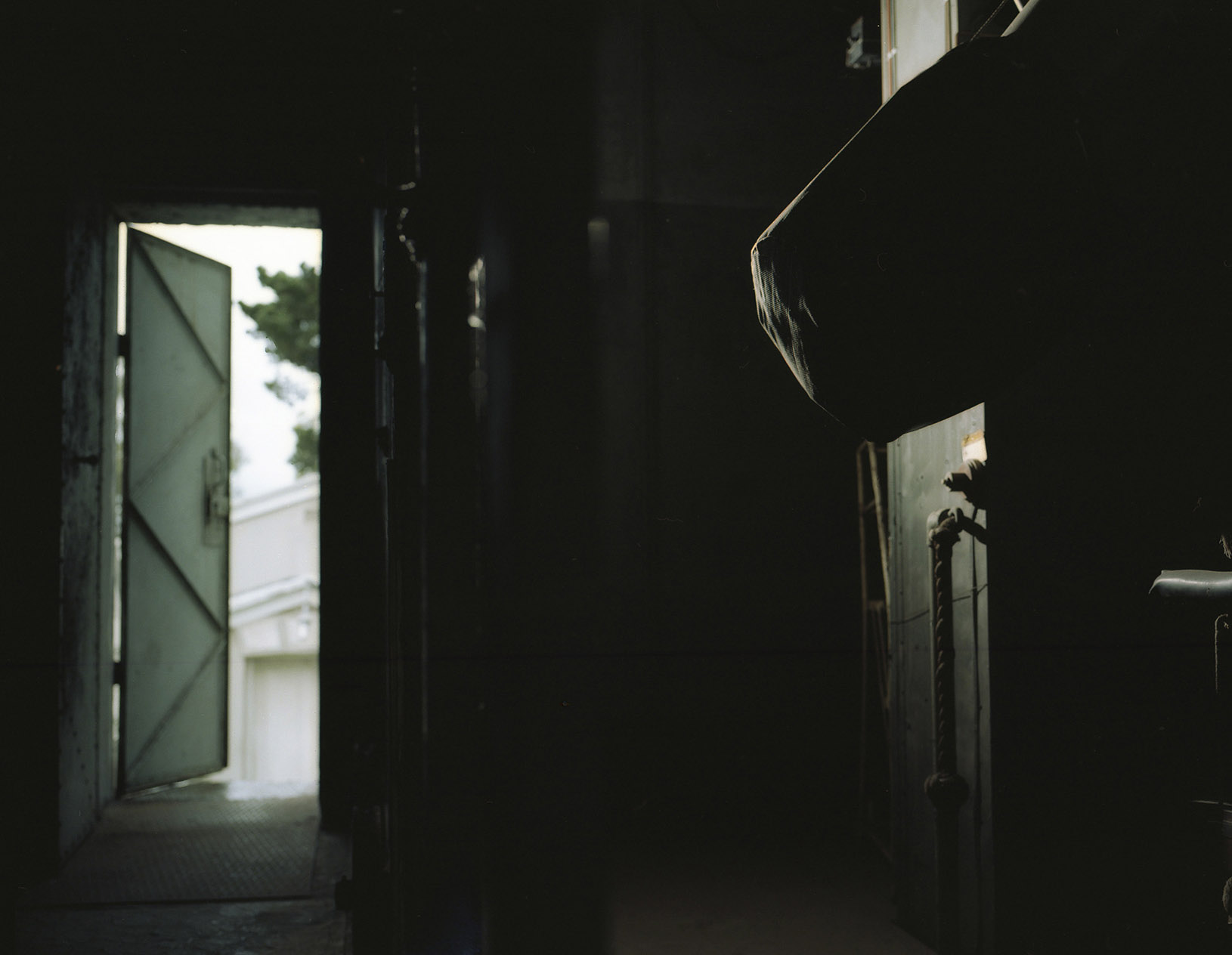‘So I think it can form a basis for humanity, the world, to say that we all have a relationship with the stars and we have used stars for different purposes. If we start sharing those experiences, those practices, those stories - it is one way in which we can unite our people.’
Sivuyile Manxoyi, South African Astronomical Observatory, SALT Collateral Benefits Programme
This building houses the Gill Reversible Transit Circle, built in 1905 to measure the position of stars as they pass the north-south meridian and to check the accuracy of clocks. It was also used to contribute to the Catalogue of Fundamental Stars (Fundamental Katalog FK4), and was in use until around 1980 - after which the use of space satellites became the norm in the 1990s. The building is in need of repair and apparently one of its chimneys is housing a bee hive.
'Do you want to hear it? It is nothing spectacular. But you’ll get an idea of what happens during the eclipse. Maximum brightness, first contact, second contact… getting close to totality - It doesn’t go completely silent because you will always have some light. We were able to get our sensor to be sensitive enough to detect luminosity. My friends at the University of Harvard were able to achieve minus 1 lux of sensitivity, that means it is a little bit more sensitive than the human eye.'
Wanda was a post doctoral fellow at the South African Astronomical Observatory in Cape Town and currently works with the Office of Astronomy for Development(OAD) where she has led the OAD project AstroSense since April 2014. She helped develop sonification methods that allow us to listen to the stars. Her research in this field started after losing her sight as an undergraduate at the University of Puerto Rico.
View of the McClean telescope dome, South African Astronomical Observatory. The Observatory garden contains many beautiful flowers and plants including rare species, having become somewhat of a sanctuary in the area. Flowers in the foreground are Leucospermum cordifolium - Pincushion, Bobbejaanklou, Luisiesboom, Luisiesbos.
‘Of course I hope with peoples interest we could take tours to see it properly - we have some ideas in the future to have a kind of heritage trail around the place. A lot of interesting scientific discoveries were made there - the discovery of oxygen in stars for example. At the moment there is a more modern telescope mounted on the mount, but that is not used - I would like to put the old telescope back there and restore it to the original. It should be possible. It was moved about 20 years ago but it is still in the dome actually. Of course it is heavy - we’ll need some proper tackle and things to mount it.’
Ian Glass, Professor of astronomy
The inside area of the tree revealed that although there were numerous trunks, it seemed to be one organism, with the oldest, thickest trunk appearing to have fallen over many years ago - some of its branches entering into the ground and then growing up out of the ground again.
These trees are known for being salt, wind and fire resistant and are originally from Australia. They are popular in coastal gardens but are invading coastal fynbos, dunes and river valleys as well as being poisonous to mammals.
This ancient animal like tree can be found in a clearing adjacent to the South African Astronomical Observatory buildings - a site that was known, in the early years of the observatory as a place surrounded by marshes and covered in snakes.
'Only one spot seemed to meet all these requirements, a low hill a few miles out on the Flats from Devil's Peak which gloried the name of Slangkop, meaning "snakehill". The name was accurate, as several astronomers would later testify in unequivocal terms. Additionally it was almost devoid of soil, while being surrounded by extensive marshes, down to which a variety of wild animals would occasionally make their way. For years, in fact, there existed a body of folk-lore on the conduct of astonomy in the presence of various unsavoury beasts.'
From The Whisper & the Vision, Donald Fernie, 1976.
This photograph was taken during the night of 14 November 2016, with the biggest supermoon since 1948. When a full moon takes place when the Moon is near its closest approach to Earth, it is called a Supermoon. The next super moon similar to this will only take place in 2034. Supermoons generally appear 14% bigger and 30% brighter than other full moons.
McClean telescope installed in 1897 at the South African Astronomical Observatory in Cape Town.

















